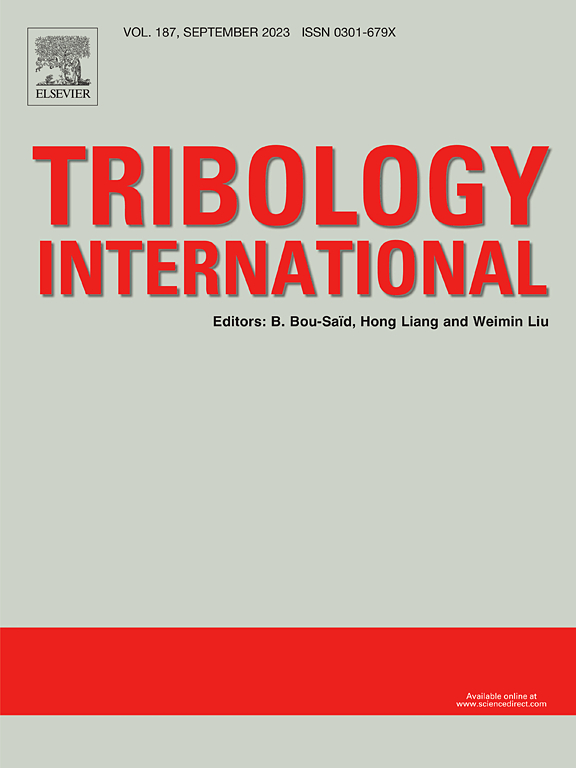Impact of oxygen-doping on heterostructure evolution and mechanical properties of FeCrNi alloy fabricated via laser directed energy deposition
IF 6.1
1区 工程技术
Q1 ENGINEERING, MECHANICAL
引用次数: 0
Abstract
Oxygen has garnered significant attention for its ability to regulate phase transformations in alloys, thereby markedly enhancing their mechanical properties. This study focuses on the structural evolution and mechanical property modulation of FeCrNi alloys. Through oxide doping, single-layer FeCrNi (MEA), Ti3Fe33Cr32Ni32 (MEA-T) and Ti3Fe31Cr30Ni30O6 (MEA-O) alloys were successfully fabricated by laser directed energy deposition. A combination of experimental methods and molecular dynamics simulations was employed to evaluate alloy performance and analyze deformation mechanisms. The results demonstrate partial melting of TiO2 in MEA-O, with in-situ synthesized oxide heterostructures significantly increasing geometrically necessary dislocation density, confirming their critical role in promoting dislocation nucleation and strengthening the coating. Furthermore, semi-coherent structures formed between distinct oxides coordinate cross-interface dislocation slip, reducing stress concentration and brittle fracture risk, thereby enhancing load transfer efficiency. Compared to oxygen-free alloys, MEA-O synergistically improves elastic modulus due to nanoscale precipitates and high-density semi-coherent interfaces at phase boundaries that restrict dislocation motion. Additionally, MEA-O coatings exhibit significantly enhanced wear resistance and friction reduction performance under both ambient and elevated temperatures. Conversely, Ti-doped MEA-T alloy shows performance degradation during high-temperature friction tests. Molecular dynamics simulations reveal titanium doping increases the γusf value of MEA-T, facilitating dislocation slip during deformation. However, precipitation strengthening causes non-uniform distribution of strengthening phases and grain refinement. These strengthening phases and grain boundaries collectively hinder dislocation propagation, increasing stacking fault roughness and stress concentration, consequently degrading the high-temperature wear resistance of the coating.
氧掺杂对激光定向能沉积法制备FeCrNi合金异质结构演变及力学性能的影响
氧因其调节合金相变的能力而引起了人们的极大关注,从而显著提高了合金的机械性能。本文主要研究了FeCrNi合金的组织演变和力学性能调制。通过氧化物掺杂,采用激光定向能沉积法制备了单层FeCrNi (MEA)、Ti3Fe33Cr32Ni32 (MEA- t)和Ti3Fe31Cr30Ni30O6 (MEA- o)合金。采用实验方法和分子动力学模拟相结合的方法对合金的性能进行了评价,并分析了变形机理。结果表明,TiO2在MEA-O中部分熔化,原位合成的氧化物异质结构显著增加了几何上必需的位错密度,证实了它们在促进位错成核和强化涂层方面的关键作用。不同氧化物之间形成的半相干结构协调了界面错位滑移,降低了应力集中和脆性断裂风险,从而提高了载荷传递效率。与无氧合金相比,由于纳米级析出物和限制位错运动的相界高密度半相干界面,MEA-O协同提高了弹性模量。此外,MEA-O涂层在环境和高温下均表现出显著增强的耐磨性和减少摩擦的性能。相反,掺ti的MEA-T合金在高温摩擦试验中表现出性能下降。分子动力学模拟表明,钛的掺杂增加了MEA-T的γusf值,促进了变形过程中的位错滑移。但析出强化导致强化相分布不均匀,晶粒细化。这些强化相和晶界共同阻碍了位错的扩展,增加了层错的粗糙度和应力集中,从而降低了涂层的高温耐磨性。
本文章由计算机程序翻译,如有差异,请以英文原文为准。
求助全文
约1分钟内获得全文
求助全文
来源期刊

Tribology International
工程技术-工程:机械
CiteScore
10.10
自引率
16.10%
发文量
627
审稿时长
35 days
期刊介绍:
Tribology is the science of rubbing surfaces and contributes to every facet of our everyday life, from live cell friction to engine lubrication and seismology. As such tribology is truly multidisciplinary and this extraordinary breadth of scientific interest is reflected in the scope of Tribology International.
Tribology International seeks to publish original research papers of the highest scientific quality to provide an archival resource for scientists from all backgrounds. Written contributions are invited reporting experimental and modelling studies both in established areas of tribology and emerging fields. Scientific topics include the physics or chemistry of tribo-surfaces, bio-tribology, surface engineering and materials, contact mechanics, nano-tribology, lubricants and hydrodynamic lubrication.
 求助内容:
求助内容: 应助结果提醒方式:
应助结果提醒方式:


